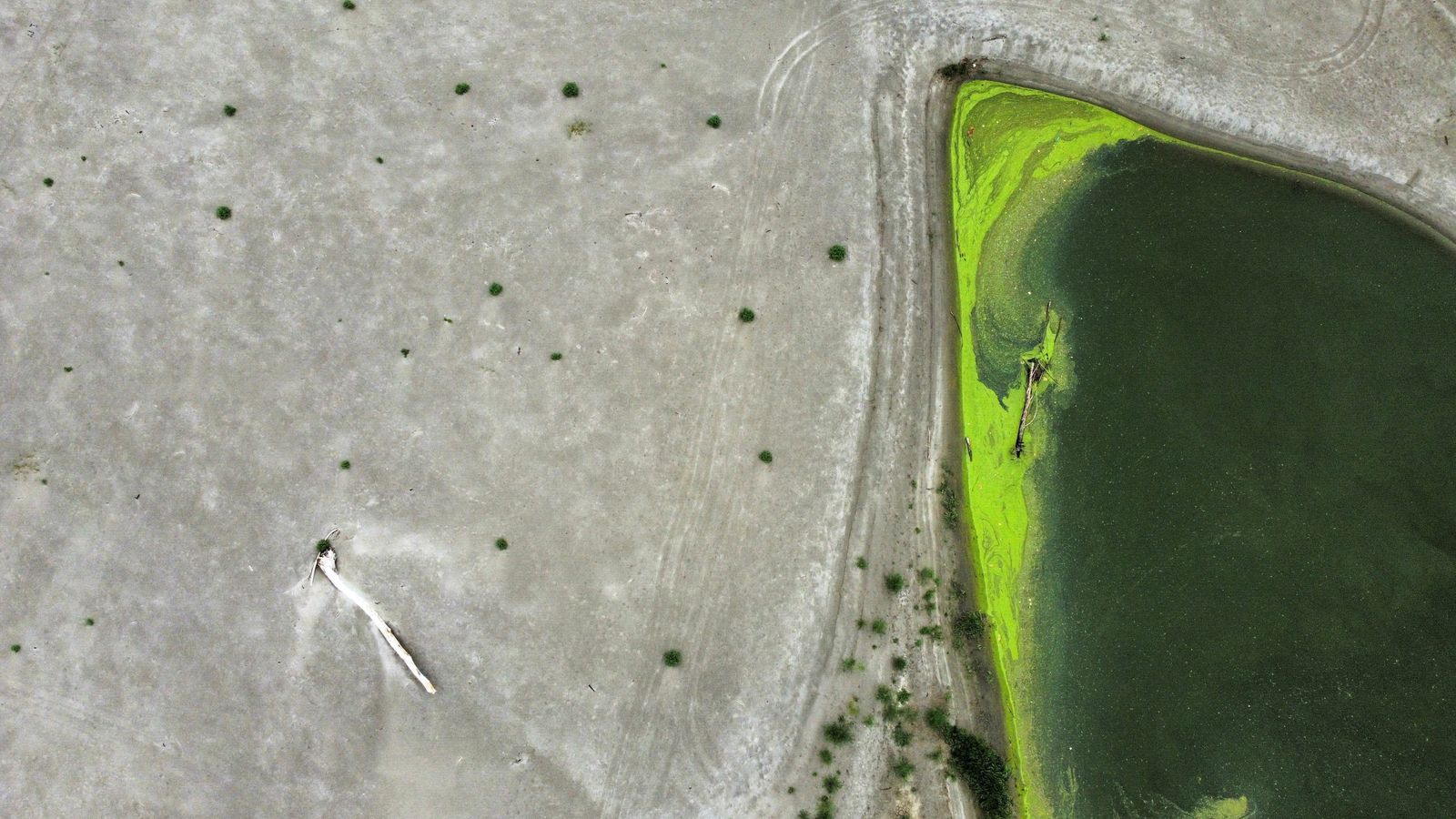Almost half of European Union land is currently under a drought warning or more severe “alert” level, hampering agriculture, energy production and water supply, the European Commission has confirmed.
From France in the east and Romania in the west, to western Germany and southern Greece, a “wide and persistent” lack of rain, combined with heatwaves, makes for an alarmingly long list of countries where drought is getting worse.
New data from the European Drought Observatory (EDO) shows some 45% of the bloc’s territory under “warning” conditions, the second of three drought categories, during the ten days leading to 20 July.
Meanwhile, 15% of land has moved into the most severe “alert” state, meaning not only is land drying out after low rain, but plants and crops are impaired too.
The figures show little improvement from the previous ten-day period, which saw 46% of land at “warning” level with dried out soil, and 13% in “alert” territory.
Further dry weather forecasts for many countries in August and September “add concerns to the already very critical situation and, if confirmed, will exacerbate drought severity and the impacts on agriculture, energy and water supply,” EDO warned in July.
Crisis team
Thousands of venomous crabs swarm St Ives beaches as sea temperatures rise
Another heatwave brewing for parts of UK next week, forecasters say
Record high coral on parts of Australia’s Great Barrier Reef, though ecosystem remains vulnerable to heating
France’s worst drought on record has left parched villages without safe drinking water, farmers warning of a milk shortage in winter and corn harvests on course to be 18.5% lower than last year.
Prime Minister Elisabeth Borne’s office on Friday set up a crisis team on Friday, as the country braced for its fourth heatwave of the summer.
“Widespread stress on vegetation” has hit the Italian lowlands, much of France, central Germany, eastern Hungary, Portugal and northern Spain, the EDO said, just as Europeans grapple with higher food prices as a result of the war in Ukraine.
Farmers in Tuscany, the heart of Italy’s prized wine and olive oil industry, are battling to salvage as much as they can of
this year’s crop from the ravages of drought and heatwave.
Professor David Hill, former deputy chair of Natural England, said intensive farming practices have worsened droughts by making the soil less able to retain water and therefore dry out or be washed away more easily.
“Where you have large scale agricultural intensification, you end up with simple ecosystems that cannot withstand shock,” he told Sky News. “Massive farms are far less resilient to environmental change than a mosaic of different types”.
Energy production hit
Russia’s latest invasion of its neighbour, and disrupting of European gas supply, also sent energy prices soaring and left countries looking to exploit home-grown energy.
But low river levels and higher water temperatures have also hindered energy production in some areas.
Water shortages reduced Italy’s hydropower production, with energy potential stored in water reserves stuck at around half the level of the last few years. Water levels in reservoirs for hydropower are down in nine countries, including Serbia, Montenegro and Norway.
Nuclear operator EDF last week reduced its power output at a plant in southwestern France due to high river temperatures on the Garonne, with half of its 56 reactors already offline due to maintenance or corrosion problems.
Parched Spain now has “extremely favourable” conditions for wildfires, while the hazard of forest fires is high-to-extreme across most of Portugal.
Climate breakdown is making drought in the Mediterranean more severe and more likely, although it is not to blame for all droughts.
Causes of drought are complex, but climate change affects it in two key ways. It concentrates rainfall into shorter and more intense bursts, making it harder to retain.
Hotter temperatures evaporate more water – and heatwaves, which are “unilaterally” linked with global warming, also drive up demand as people seek to cool off.
Watch the Daily Climate Show at 3.30pm Monday to Friday, and The Climate Show with Tom Heap on Saturday and Sunday at 3.30pm and 7.30pm.
All on Sky News, on the Sky News website and app, on YouTube and Twitter.
The show investigates how global warming is changing our landscape and highlights solutions to the crisis.






















